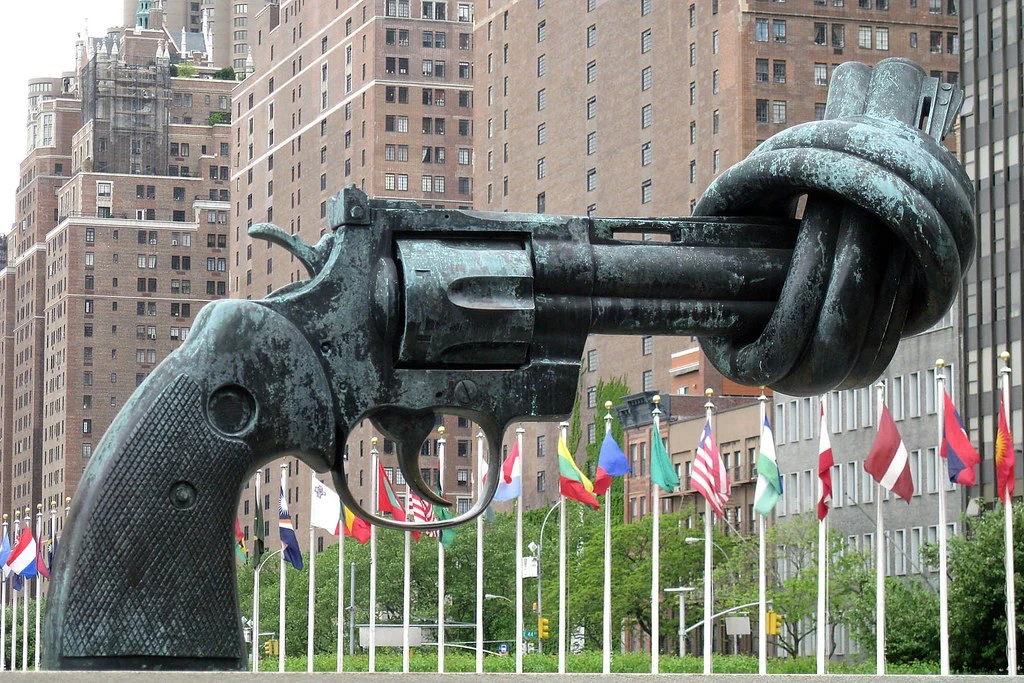In a world often marred by conflicts and violence, picture a moment of unexpected unity and harmony. Imagine a bustling city square, where people from diverse backgrounds, religions, and cultures come together, shedding their differences and embracing each other with open hearts. It may sound utopian, but this vision of peaceful coexistence is precisely what the International Day of Non-Violence seeks to attain. As we celebrate this remarkable occasion, let us explore the significance of non-violence and its potential to foster a more harmonious world.
The International Day of Non-Violence
The International Day of Non-Violence is observed every year on October 2nd, coinciding with Mahatma Gandhi’s birth anniversary. This day pays tribute to Gandhi’s tireless commitment to non-violence and his role as a key advocate for peace. It serves as a reminder to individuals and societies worldwide to strive for peaceful resolutions to conflicts, promoting dialogue, understanding, and reconciliation.
Learning from Mahatma Gandhi’s Principles
Mahatma Gandhi, often referred to as the “Father of the Nation” in India, lived by the principles of non-violence and truth. His philosophy of Ahimsa, in which non-violence is not merely the absence of physical harm but also encompasses love, forgiveness, and compassion for all, provides us with invaluable lessons. We can adopt these principles in our daily lives to create a more harmonious environment, both personally and globally.
Non-Violence as a Catalyst for Positive Change
Non-violence is not a passive acceptance of injustice; it is a powerful force that can bring about meaningful transformations. History bears witness to numerous movements that have harnessed the power of non-violent resistance to challenge oppression and advocate for human rights. From Gandhi’s Salt March against British colonial rule to Martin Luther King Jr.’s civil rights movement, the message remains clear: non-violence has the potential to galvanize change, inspiring generations to fight for justice, equality, and peace.
Constructive Communication and Conflict Resolution
One vital aspect of non-violence lies in promoting constructive communication and conflict resolution. Instead of resorting to aggression, non-violent dialogue encourages active listening, empathy, and the pursuit of common ground. By engaging in peaceful discussions, individuals and communities can bridge divides, dissolve prejudices, and find lasting solutions to conflicts. This approach helps cultivate a culture of inclusiveness, fostering respect and understanding across divergent viewpoints.
Education for Peace
Education plays a pivotal role in promoting non-violence and creating a culture of peace. By integrating peace education into curricula, we can empower future generations with the skills and values necessary for peaceful coexistence. This includes teaching conflict resolution, building empathy, nurturing tolerance, and encouraging responsible citizenship. Education for peace enables young minds to identify the root causes of violence and equips them with the tools to combat it effectively.
International Day of Non-Violence a Beacon of Hope
The International Day of Non-Violence serves as a beacon of hope, reminding us of our collective responsibility to promote peaceful coexistence. By learning from the principles of Mahatma Gandhi and embracing non-violence in thought, word, and deed, we can create a world where differences are celebrated and conflicts are resolved amicably. Together, let us embody the spirit of non-violence, fostering dialogue, compassion, and understanding in our communities to build a future of lasting peace.
